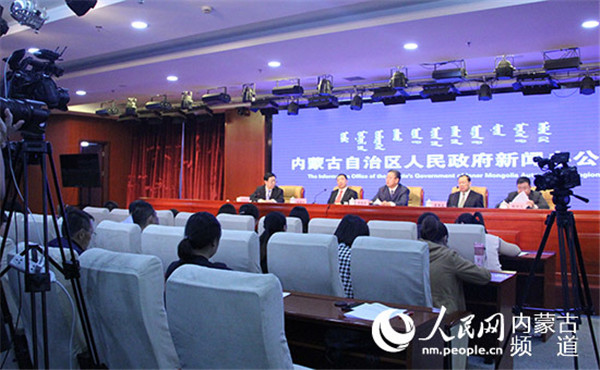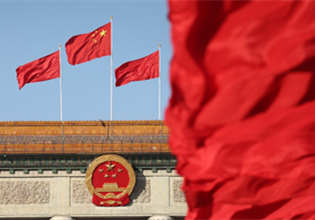70 years' glorious achievements of Xiliin Gol League

Local offcials from Xiliin Gol League in North China's Inner Mongolia autonomous region reports the achivements made by the league at a press conference held in Hohoht, the capital of the region on Sept 17. [Photo/nm.people.cn]
The GDP of Xiliin Gol League in North China's Inner Mongolia autonomous region, hit 81.39 billion yuan ($11.48 billion) last year, an increase of 3,844 times on the GDP recorded seven decades ago during the early days of the founding of the People's Republic of China (PRC), according to local officials.
They told a press conference held in Hohhot, the capital of the autonomous region on Sept 17, that last year per capita GDP topped $10,000 and that local fiscal revenue reached a total of 7.62 billion yuan, an increase of 4,032 times over that of the PRC's early days.
The press conference was part of a series of events held in Inner Mongolia to celebrate the autonomous region's achievements over the past 70 years and to mark the 70th anniversary of the founding of the People's Republic of China.
According to local officials, about 80 percent of the financial resources of Xiliin Gol League are devoted to its resident's social conditions, including continued efforts on poverty alleviation.
Officials said the poverty rate dropped from 3.72 percent in 2015 to 0.63 percent in 2018. Five regional-level poverty banners and one national-level poverty banner have been lifted out of poverty in the period. The remaining two national-level poverty banners will be out of poverty this year, officials said.
Last year, per capita disposable income of Xiliin Gol League's urban and rural residents reached 38,299 yuan and 15,525 yuan, respectively, which was 140 times and 110 times higher than that during the initial period after the founding of the PRC.
The urbanization rate of permanent residents in the League has increased to 65.74 percent. Almost all the banners and counties within the League are now linked by arterial highways. In addition, the total mileage of rail within the league ranks first in the autonomous region.
Officials said the environment has also improved significantly. In the 21st century, forests in the league have expanded by over 66,000 hectares annually, and the total afforestation area is now more than four times that of levels seen during the first 50 years since the founding of the PRC.
The forest coverage rate has increased from 1.24 percent to 7.56 percent currently and the grassland coverage has increased by an average of 15 percent or more annually. Xiliin Gol's forest coverage and grassland coverage were continuously improved in the last seven decades and its desertification and sandy areas has continued to recede.
In addition, the local cultural tourism industry, modern animal husbandry and clean energy industry have combined as three dominant industries. The overall goal is to build the league's national tourism demonstration area up as an important tourism and leisure destination, both for Chinese and international visitors, to promote the high-quality development of tourism.
Since the implementation of the 13th Five-Year Plan(2016-2020), the league has implemented more than 30 key tourism projects and invested more than 5 billion yuan. Last year, it received 16 million tourists and realized 40 billion yuan in tourism revenue.
Xiliin Gol was an important passageway for the Tea Road and the grassland Silk Road in history. Today, Xiliin Gol League's Ereenhot and Zhuengadabuqi's land ports are important transport nodes for the Belt and Road and the China-Russia-Mongolia Economic Corridor and play an important role in the opening up to the north.
In terms of foreign trade, Ereenhot inland port saw volumes of 16.56 million tons of imports and exports last year, with a total foreign trade worth 23.7 billion yuan – with an increase of 23 times and 13 times, respectively, for import and export volumes back in 1993.
Statistics showed that 65 percent of Mongolia's means of production and 80 percent of its means of livelihood imports were imported through Ereenhot.
In terms of inland port facilities, Ereenhot has built railway, highway and air links. The Russia-Mongolia Railway has a transport capacity of 16 million tons.
The annual cargo capacity of Ereenhot land port is more than 5 million tons. In 2018, the number of entry-exit personnel reached 2.25 million, accounting for 48.5 percent of the total number of entry-exit people in the autonomous region.
The airport has opened many domestic routes to Beijing, Hohhot, Tongliao and other places – as well as international routes to Ulan Bator, Ulan Ude, Irkutsk and other places.
While streamlining its customs clearance facilities, Ereenhot has made great efforts to optimize the business environment, increase investment in science and technology and improve customs clearance efficiency.



 Print
Print Mail
Mail





